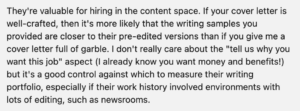As I rested in recovery after a pre-op test and before surgery, a physician assistant stopped by with a consent form. It authorized the team to do not just one but two procedures on me in a few short hours. WHAT? I refused to sign without a firsthand medical briefing. No amount of prodding could persuade me. Soon a second physician assistant appeared with a more forceful approach. STILL NO. For someone like me, who prefers to go with the flow, I was in uncharted territory. My friend, who initially sat quietly, walked out because I would not cooperate. Was I really doing this? YES. Quivering and anxious, I stayed firm by channeling my fiercest advocate—ME!
Just then, the anesthesiologist assigned to my case dropped in and I relayed what happened. Within 15 minutes, through one means or another, three physicians stood before me to explain the proposed change. I listened intently. They extended me the same courtesy. We discussed the possibilities and agreed to add the second phase only if absolutely vital. That said, I signed the paper. I would not know the outcome until after the fact but I understood the potential course of actions and they knew my concerns and wishes. More about that later….
This impromptu meeting and resolution only came about because I summoned and held steadfast to my inner strengths and skills. It set the tone for my hospital stay. I had to be on top of everything. We all do. This wisdom refers to both our personal and professional interactions.
We need to voice and safeguard our rights and wishes. That requires advocating for ourselves at the right time and in the right way.
Self-Advocacy: What’s It All About?
Before going any further, let’s not leave the topic under discussion to interpretation. What does it mean to advocate for yourself?
Oxford Dictionary defines self-advocacy as “the action of representing oneself or ones’ views or interests.” Another source expands upon this and outlines the how to’s. It frames self-advocacy as “an individual’s ability to effectively communicate, convey, negotiate or assert his or her own interests, desires, needs and rights. It involves making informed decisions and taking responsibility for those decisions.”
Content on MasterClass underscores the complexity of what’s involved. “Recognizing your needs and assuming control of the decisions that affect your own life are necessary steps to advocate for your best interests.” Acting in this fashion comes with an array of potential benefits. As examples, this post notes that “self-advocacy can help you develop strong problem-solving and communication skills.”
Most of all, advocating for yourself can make a difference. Its importance derives from helping you: “obtain what you need; make your own choices; learn to say no without feeling guilty; express disagreement respectfully.”
Realize that advocating for yourself is not simply: this is what I want; give it to me. Awareness, knowledge and know how are essential building blocks. Self-advocacy is a methodology that demands clear thought and keen execution to deliver desired or agreed upon results.
“Knowing how to self-advocate is a skill that takes practice and effort to master.” From this perspective, how should you get started or, if needed, polish this capability?
Setting the System in Motion
Sometimes the occasion to self-advocate pops up on the spot. Take what happened to me, for instance. At others, you likely have the luxury to plan your strategy. No matter how it evolves, self-advocacy is a process. The steps along the way may include:
- Identify – Hone your awareness of occasions to advocate. Assess situations and whether they merit it. Do a quick cost/benefit-type analysis to determine go or no. Take a judicious approach; otherwise, in the same setting or circles, repeated attempts may render your actions ineffective and even harm your reputation, Alternatively, don’t overlook and be complacent. Instead, read what’s going on around you. Be cognizant of opportunities. For example, a plum windowed office becomes available. Should you advocate for it?
- Get Smart –Gather the information you need to navigate the path. Do a deep data dive on a personal level. Perform a wider situational analysis too. Arm yourself with the findings. Get acquainted with wide-ranging potential feedback that may arise, including objections. Have fallback positions at the ready. Let’s say you seek a new job or promotion. Showcase your experience and skills; make your case credible and convincing. Prepare to address what may come up about areas of weakness. Intelligence–don’t advocate without it.
- Articulate – What do you seek to achieve? Formulate your response with precision: what do you want? Keep it simple, crystalline and to the point. Your “ask” should be something of value not to you alone but others in its arc. Frame it, prove, promote, make it appealing. If a discussion ensues, follow with: Why? What do you propose to offer in exchange? In other words, what is your value proposition? “To best achieve your goals, make sure to have a clear idea of exactly what you’re hoping to accomplish. This bedrock will make you feel more comfortable when putting your foot forward to negotiate!”
- Engage – When the mountain (or physician assistant) doesn’t come to you, do the legwork on your own. In a business environment and elsewhere, request an appointment with an ally, supervisor or decision maker. Create an appropriate subject line or theme. Remember the big picture: make this first move and all those that may follow of interest and benefit to all stakeholders.
- Go! – It’s advocacy show time, starring you. Use the prior steps to script your role and rehearse. “Over-prepare.” Now present. Expect questions, comments, even arguments. Gladly accept these challenges and keep the constructive dialogue going. Respond with anticipated questions of your own and measured points to go back and forth. Offer options. Come to an agreement of some kind.
Advocacy is not necessarily all or nothing. Stay determined but enable all involved to derive good things to show for it. Don’t “fixate on a single solution that works for you. Instead consider what matters to your counterpart and find multiple ways to satisfy both of you.”
Tips: How to Come Across
Throughout the process, keep this principle in mind. It’s not only what you do to succeed when self-advocating, but also how you do it. Attitude reigns important here. Strike a fine balance between being assertive and persistent. Do that by acting positive and polite all the time. You don’t want to alienate those in the chain of command, who ultimately make decisions affecting your goals.
How? Adhere to these guidelines every step of the way:
- Be courteous
- Stay calm
- Maintain a pleasant temperament and tone of voice
- Practice good body language and listening skills
- Be fair and reasonable
Self-advocacy requires work and discipline. Those who excel at and exercise this skill “are more likely to thrive in school, work and life.”
Getting back to where we started, when I awoke from surgery, I discovered the team went ahead with the original plan. Self-advocacy success? I hope so!
About the author.
You name it, she covers it. That’s the can-do attitude Sherry M. Adler brings to the craft of writing. A polished marketing and communications professional, she has a passion for learning and the world at large. She uses it plus the power of words to inform and energize stakeholders of all kinds. And to show how all of this can make a difference, she calls her business WriteResults NY, LLC.
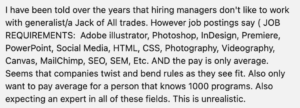
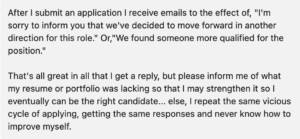


![]()
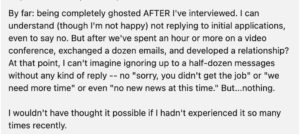
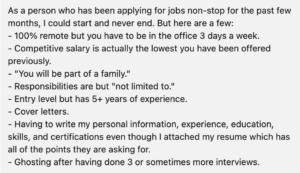
![]()


